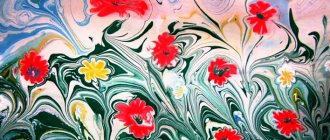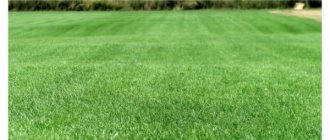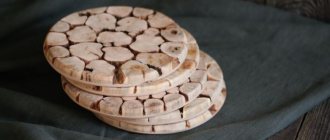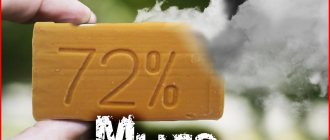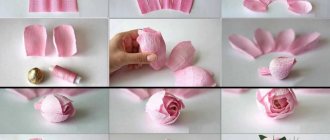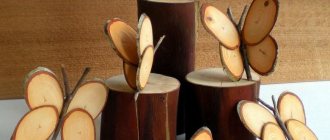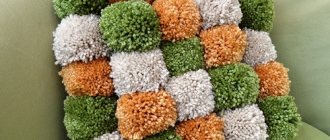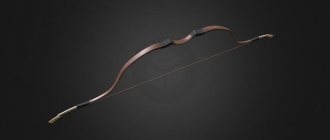The old masters made their own paints and brushes. The technology for making brushes is not complicated, but it is responsible and requires delicacy. This is an unusual business, so few people know the secrets of this craft. However, you can make brushes even at home. So, what is the technology for making art brushes?
1. Harvesting hair or bristles.
The hair of animals contains down and straight hair, which is thicker than down and stiffer. I wrote about what hair and what animals classic brushes for painting are made from. When harvesting hair, you need to sort it by length. The hair bundle should consist of hair of approximately the same length. The ends of your hair should never be cut. I wrote why this is important.
2. Forming the basis of the future brush.
Next, the hairs in the hair bundle are aligned in some small cylindrical vessel. The bottom of such a vessel should be flat. The hair descends with its trimmed part to the bottom of the cylinder. Now, it needs to be leveled by gently tapping the bottom of the cylinder on the table. The hairs will settle and become even. After this, they are tied into a bun and combed with a fine-toothed comb to remove unnecessary hairs.
3. Degreasing and tanning.
Degreasing is carried out by soaking the hair bundle in gasoline for 3 days. After this, it is washed with clean gasoline and dried. After which, the workpiece should be boiled in a 10% solution of potassium alum. This is called tanning. Tanning is necessary in order to make the hair non-hygroscopic, flexible and durable.
4. Hardening.
This procedure is necessary to give elasticity to the hair. The hair of a painting brush should be moderately elastic and hard, moderately elastic. To harden, the hair of the future brush is wrapped in thin paper, for example, newspaper and tied with thread. Next, the hair is hardened in an oven with hot air at a temperature of 150 degrees. This is done for about an hour. The time and temperature are not the same for different types of hair and depend on their type. The temperature can be determined by the color of the paper: if it turns slightly yellowish, then the temperature is insufficient. If it turns brown, the temperature is over 150 degrees. In this case, the hair will become brittle, so do not exceed the temperature. After the initial hardening, the hair is combed to remove unnecessary hairs and the hardening is repeated. The quality of hardening is checked by wetting the future brush in water. If the hairs on the surface of the bundle become curly, then the hardening is insufficient.
5. Knitting the brush.
After all procedures, the hair bundle is untied and placed in a cone of the appropriate size with the hair ends down. Next, tapping the cone on the table, you need to straighten the hair. The hair bun should take on a conical shape (if the brush should be round or elliptical). After giving the desired shape, short and unnecessary hairs are combed out of the hair. Then the hair bundle is finally tied with thread. The bandaged area is impregnated with glue.
6. Securing the hair in the capsule.
The capsule is a metal part of the hand that looks like a conical tube. The hair bundle is placed into the capsule on its wide side, after which the hair inside the capsule is filled with glue. (By the way, capsules can be used from old and damaged brushes, after first clearing it of glue and hair.) The length of the hair of the future brush must be adjusted depending on its purpose. Too long hair makes the brush soft and unable to hold its shape well, but it is flexible and holds a large amount of paint. On the contrary, short hair will make your brush hard and unyielding.
7. Securing the capsule to the handle.
Finally, the capsule is placed on a wooden handle. First, glue is instilled into the capsule. After this, the capsule is pressed onto a wooden handle. The brush handle can be tinted, painted and varnished.
If you do everything correctly, the brush will turn out no worse than the factory one. Therefore, I wish you success in this rare craft!
If you have firmly decided to become a nail art guru or at least learn how to perform some popular techniques, then you cannot do without brushes. After all, they are used for almost any design! From this article you will learn the basic truths: what types of manicure brushes there are, which ones are useful for what, and get the simplest lessons on how to use them.
What brushes are needed for manicure: fluffy classification
If you go to the store unprepared, the variety of brushes can easily confuse you. Different thickness and shape, price category, how to figure it out?
The first classification is by purpose. Simply put, there are tools for extensions, and there are tools for nail art. So, if you just want to practice with non-trivial patterns, then the range of choices narrows.
Otherwise, brushes are divided according to three criteria:
- Material of manufacture. It can be artificial or natural. It is clear that the latter costs more. The best brushes are made from sable or kolinsky (this is a predatory animal). But, to be honest, in practice they are not much different, except that natural ones last longer.
- Pile thickness. The thinnest one is indicated by the numbers 0 or 00, and the plumpest one will have the sign 8.
- Form . There are instruments with a pile a little thicker than a hair, and there are those that open like a fan, and they all have their own purpose.
Types of manicure brushes: which one is for what?
It is logical that the thinner the brush, the more elegant the patterns they paint with it. But this conclusion will not take you far, so it is better to familiarize yourself with all the types and nuances of use.
Spot
The accumulation of villi makes the tip look like a pike. This silhouette is convenient for drawing the smallest details. They are used to draw flower buds, lace, shell edges... How to use it? Hold the brush vertically and dip only the tip into the polish. Having placed a point, stretch it, forming a pattern. The set may include a dotting brush, bent like a boomerang; it makes painting a little easier.
A short video will clearly show the “spot work”:
Liner (aka “hair” and “stripe”)
This is a round thin brush with bristles a couple of centimeters long. It is used to draw long lines or curls. A set usually contains 3 such brushes.
The longest ones are more convenient for drawing strips, and the shorter ones are suitable for curved parts of the design. To do this, you need to dip the entire pile into varnish, blot off the excess and paint.
The liner is indispensable for fashionable geometry, monograms and drawing stems.
Video tutorial with liner:
Flat brush
It has a wide working surface, the tip is evenly cut. Suitable for drawing flowers, gzhel, gradient, distributing glitter, powder, rubbing.
Several techniques with it can be seen here:
Beveled (dagger-shaped)
Because of the pile cut at a 45-degree angle, it received this second name. It is universal in that it allows you to draw both three-dimensional drawings and thin patterns. An angled brush is great for a French manicure. In addition, you can put several colors on it at once and create compositions in the style of Chinese painting.
Petal
It immediately looks like a flat dagger brush and a dot brush. The shape is flat, tapering towards the end. The petal handles both small drawings and painting, brings out French smiles, and even applies glitter.
If your point and bevel brushes become unusable, then the petal is just the right tool to replace the other two at once.
Fan
As the name suggests, the brush looks like a fan, as the bristles spread out in a semicircle. It is used to create a design with glitter, scoop and sprinkle acrylic powder, and create a gradient.
Abstract and landscape compositions are also depicted with a fan.
This video tutorial will show you an easy way to apply glitter evenly with a fan brush:
Dots
The rod is crowned with a small ball. By dipping it in paint, you can not only make polka dot nails, but also draw monograms, flowers, and lace. Depending on the diameter of the ball, dots can replace a dotting brush and liner.
For extension
Such tools are much thicker and wider than the above ones, so that it is convenient to pick up and lay out gel or acrylic. They are made from synthetic materials.
Here is the entire list of necessary brushes for a nail artist. They can bring any nail art to life.
Why do you need to do hand exercises?
People with an ectomorphic body type often notice that their thin wrists look disproportionate compared to the well-developed muscles of the arms and shoulders, and “how to pump up your wrist?” is the first question they ask the instructor at the gym. This picture is due to the thin radius and narrow wrist joint; many ectomorphs have a wrist volume that does not exceed 12 cm. In this regard, they wonder how to pump up the muscles of the hand and how noticeable the result will be.
The musculature of the hand consists of 33 small muscles that are responsible for pronation and supination of our palms, as well as grip strength. Therefore, if you are wondering how to improve your grip, be sure to find a place in your training process for static exercises for the hands. It won’t take much time: it’s enough to spend 15-20 minutes working on such small muscle groups at the end of a regular workout in the gym.
© mikiradic — stock.adobe.com
A well-developed grip makes it easier to perform back exercises without the use of wrist straps or hooks, and is also necessary for really serious deadlifts. It is also necessary for victories in arm wrestling and martial arts, because truly strong arms begin with strong hands.
In addition, exercises for the hands and palms should be done by people who have suffered arm injuries; this will restore their former strength and mobility. Many of the exercises listed in our article are recommended by experienced doctors as part of recovery from injuries.
Silicone brushes
Progress does not stand still, and now almost every brush from the standard set has a backup in a silicone version. The name of such brushes is shapers.
“New Shift” can boast several advantages:
- Durability. No hairs deteriorate or become brittle, and the silicone is very easy to clean.
- Convenience. It’s not easy for beginners to draw the same smiles on a long-pile French coat. And such a brush is no more difficult to control than a pencil. In addition, the varnish does not spread on it.
- Versatility. In addition to drawing patterns with shapers, you can rub in pigments, shape the molding, smooth out the decor, use a sharp tip to erase your own flaws in the work, and even put rhinestones on the nail.
In the video, the master will tell you why these brushes are useful:
Whether or not to use shapers is your choice. You can buy a futuristic set to play around with original tools. However, absolutely everything that shapers can do can be easily done with ordinary brushes.
How to choose the “right” brushes
Manicure brushes are available in both natural bristles and nylon. So – which ones are better?
You need to look for quality options in special stores and, of course, you should hold them in your hand, and not choose them based on one picture. If you order on the Internet, do not be lazy and look through the reviews.
When choosing, pay attention to these criteria:
- Pile. Seasoned experts advise beginning craftsmen to learn with nylon. Not only does the material not spread or be absorbed on it, but it’s also not a shame to “kill” such brushes in the process of studying. When you become more experienced in nail art, purchase more expensive options made from sable or kolinsky. Another point: natural brushes are more suitable for painting, while synthetic brushes are more suitable for viscous materials, such as gel. The fibers should be even and tightly adjacent to each other.
- Fastening . If it is weak, then you won’t be able to hold the brush confidently. So check it out without leaving the checkout.
- Handle length. The shorter it is, the more convenient it is to draw.
The most profitable option is to buy a set, in which each brush has a backup. If you want to purchase separately, it will cost more. But there’s no point in spending money on 10 pieces. You already know that some brushes can replace each other. Therefore, you can buy only three brushes: a dotted one for small patterns, a liner for fine lines, and an angled one for large elements.
So, manicure brushes have revealed their secrets: which one is useful for what, what to replace it with, and how to paint the most incredible patterns on your nails. Now you can free your inner creator and surrender entirely to inspiration. Even the process of creating beautiful compositions alone will bring a lot of pleasure!
Today, many girls spend a lot of time and money on their manicure. Not everyone goes to beauty salons. Some do it themselves. To ensure an amazing result, it is important to use manicure brushes correctly.
General training recommendations
Most exercises do not require special equipment.
For example, to pump up your fingers, your own body weight is enough. For this, push-ups on the floor on your fingers or pull-ups on the horizontal bar on four (or less) fingers are suitable.
These are very difficult movements, which become more difficult if you reduce the number of supporting (working) fingers.
A rubber band or tennis ball may be needed. But these are the minimum costs that anyone who is faced with the question of how to pump up their hands at home will afford.
As for the training load, a set of exercises is done 2-3 times a week. This will be enough for stable progress.
You can create a complex for developing all types of strength, one exercise in 2-3 approaches for each.
The range of repetitions depends on the training goals:
- Strength development – 5-10 repetitions, or 5-10 seconds of static tension
- Muscle mass – 10-20 reps
- Strength endurance – 30-50 repetitions. In static conditions, the duration of the voltage phase is 60 seconds or more
Types and purpose
Manicure tools are always available in specialized stores. There they are sold both individually and in sets. It usually includes several basic brushes, which are almost always necessary for performing different types of manicure. Each of them has its own purpose:
- A dotting brush is used to apply fine details. With its help, it is possible to carefully draw various designs on the nail. It also holds rhinestones or glitter well.
- The petal brush has a narrower corner than the dot brush, and the shape is flatter. It is used to apply simple strokes or glitter, as well as unusual patterns. This tool is often used to create ethnic motifs on nails.
- A fan brush will be needed to apply abstract designs and landscapes to the nail. This allows you to make it in the form of a semicircle. She blends shades and midtones well and applies glitter.
- To apply several varnishes at the same time, choose a flat, beveled brush, which is also called a “dagger-shaped” brush. With its help you can create both subtle and complex three-dimensional patterns.
- To completely cover the surface of the nail with varnish, you need a wide brush. This tool allows you to realize interesting and intricate ideas for manicure.
- A device with a short pile is usually used to draw leaves and all kinds of curls.
- A liner brush, or hair, comes with bristles of different lengths. It can be used to create animalistic designs, floral patterns, geometric patterns or draw straight lines.
Manicure brushes are also divided into 4 groups. The criterion is the material with which they will work.
- Varnish brushes
are used when you need to make designs with your favorite varnish, but the brush in the bottle itself does not correspond to the desired thickness. They can also be used for pedicures, since their length is longer than the length of the brush in varnish.
- Acrylic modeling brushes
are essential for adding nail extensions. With their help, they create the necessary bend and model the shape. They differ in rigidity and length of the pile. The brush bundle is elastic and easily restores its original shape after pressing. The tip of this tool gently deposits powder while creating your cuticle line.
- Brushes for working with gel
differ in their structure. Their bristles are stiffer than other brushes. They are shaped like a square or rectangle. Thanks to these properties, such a tool is easy to work with fluid and viscous gel.
Art painters always have brushes for nail design
Drawing a Fox Tail: Stages of the Artistic Process
Step 1
Create a new document and then create a new layer. First we use a hard round brush to create a tail that will represent the fur pattern. Next, use the brushes we created earlier in this tutorial.
- Draw the tail using light gray shades. Notice the white tint at the tip of the tail.
- Next, add dark gray shades at the very top of the ponytail.
- Lastly, I use a mid-tone gray color at the top of the tail. This will give you an idea of what the base of the tail should be.
Step 2
Now, switch from the current brush to the Rough Fur brush or the Soft Fur brush, both of which we created earlier. Notice that I set the Spacing to 4% and also selected the Build -Up and Smoothing . I also selected the Shape Dynamics and set the following values: Size Jitter Control : Pen Pressure, because... I use a graphics tablet throughout the lesson. Drawing digital pictures can be challenging without the use of a tablet.
Step 3
Let's continue adding texture to our tail and also do some tonal blending.
- Let's start from the top of the tail, use the Rough Fur brush or the Soft Fur brush, the brush colors are medium and light gray.
- Please note that the size of the brush will determine the type of fur on the tail. Adjust the brush size accordingly. You may need to experiment a bit to find out which brush size is right for you.
- On the top of the tail I used the Rough Fur brush and on the bottom of the tail I used the Soft Fur brush to represent the different textures of the fur.
Step 4
- Play with the other brushes you've created. Now, notice the variety of color tones on the fox's tail. ( Translator's note: a half-tone tail base will help create a variety of color tones). I created small dots around the tail using the stippling brush we created earlier. I drew small dots on the top side of the tail.
- Once again add a light gray shade at the bottom of the ponytail. Think about how the highlights might reflect on the fur of the tail itself.
- I decided to add shadows to the top right part of the ponytail.
- I also decided to add dark gray to the sides of the tail. Keep blending the tones and keep the original tail image handy in case you need to see what the fox tail looks like in terms of tonal transitions.
Which material to choose?
It can be difficult for beginners in nail art to decide on the material from which manicure brushes are made. It can be natural or synthetic. The final result depends on its features.
The material for making natural brushes is usually sable wool or kolinsky.
The bristles of these brushes are of high quality. They do not require special care, but will last a long time. With such tools it is convenient to draw patterns of varying complexity using different types of paints.
The polymer material from which synthetic manicure devices are made significantly reduces their cost. These brushes hold the polish well and do not allow it to bleed.
The main advantage of silicone brushes is their durability. At this point they are superior even to natural hair instruments. These brushes are convenient for applying small details.
Professional craftsmen prefer devices made from natural fibers. They appreciate their dense structure, moderate rigidity and long service life.
In order for the tool to last as long as possible, it needs to be properly cared for. Manicure brushes should be used exclusively for nail design. You should not draw with them on paper, so as not to deform the pile. When using regular paint instead of varnish, hairs often fall out.
Not only does keeping a brush in water for a long time lead to a change in its shape, but even a short period of time will lead to the loss of the original appearance of the bristles. You can return it by holding the brush in hot water for several minutes.
To prevent the varnish from drying out on the bristles of the brush, they should be washed immediately after use. If you do not do this in time, you will need acetone to clean them, which damages the structure of the fibers. The bristle of the brush will wear off very quickly when using a palette with an uneven surface. To avoid this result, do not rub the instrument with force on a napkin.
To extend the life of the tool, cuticle oil should be applied to it at the end of the procedure. Only well-dried brushes can be placed in the storage case. Exposure to the hot air of a hair dryer will be detrimental to the lint of instruments.
Types of hand grip strength
Due to its anatomical structure, the hand performs a large number of multidirectional movements. And each involves the development of different types of strength.
Let's look at the main types of grip strength:
- Compressive
Manifests itself in the maximum compression of an object.
- Retaining
The strength of holding an object (barbells, dumbbells) or your own body weight (hanging on a bar).
- Plucked
Ability to hold and lift objects using the thumb and palm.
- Wrist strength in static (isometric) mode
Ability to hold the hand in a fixed position during forceful load.
There will be many answers to questions about how to pump up your hands or how to pump up your fingers. As you already understand, there are training methods aimed at developing the strength of the fingers, wrists, and forearm muscles.
How to do it at home?
To practice patterns and small details, beginners can make a nail design tool from a regular watercolor brush. This is easy to do yourself at home, with only a brush and tongs.
Using manicure tongs, carefully remove small tufts of fibers from the very base of the brush from the edge to the center. You need to try to ensure that as a result the brush is in the middle and does not move to one side. Trim the pile in small sections to avoid damaging the instrument. The number of fibers to be cut is determined by the required size of the future tool.
A good, inexpensive paint brush can be converted into a tool of the desired design and size. Caring for it is the same as for a specialized manicure brush.
It is important to remember to treat the instrument with care so that it lasts as long as possible.
How to Draw a Fox Tail: Soften the Fur
Step 1
Let's set up Smudge Tool.
- Select the Smudge Tool.
- Set the Strength 77%. You can, of course, vary the Strength during the process. You can choose a more or less suitable value for your work.
- In the brush settings panel, turn off the Dynamics and the Smoothing option should be on.
- Finally, set the Spacing value to 10 %.
Step 2
Now, let's soften the tail.
- Using the Smudge Tool , start processing the top part of the ponytail. Gently begin to smear the fur curls in a downward direction.
- Vary the length of your strokes.
- Also, try to keep the brush movement mostly in one direction. At this stage, I have reached the middle of the tail.
- Continue moving down the tail, smearing different areas of the tail. Notice how we softened the top half of the tail.
Step 3
We continue to smear sections of the tail.
- The brush movement should be as if you were painting small pieces of fur, not as if you were painting the entire tail at once. Try to keep your computer in step with the movement of the tool. Sometimes it may lag and then you will have to wait a little.
- Try to smear to the side on the ends of the fur. This will make the fur look shaggier and less coiffed.
- Notice how soft the ends of the fur are and also how the fur tapers. All the lines that we drew earlier should taper in accordance with the tonal transition of the fur.
- Soften the dark areas of the fur so that they lie in the same direction.
Step 4
Let's zoom in (Z), (to be honest, I rarely zoom in/out while working, but for the purpose of this tutorial, I tried to show each step in full).
- Notice how the fur stands out at the edges. This is thanks to the Smudge Tool, specifically moving the tool down and diagonally.
- Create a new layer. Using a small, hard brush, or the Tuft of Fur brush, or the Short Fur brush (we created the last two brushes earlier in this tutorial), paint tufts of fur or individual dark hairs that stand out from the background of the locks of fur.
- Notice how these dark hairs of fur highlight entire strands of fur. Experiment with the size of the brush, as well as the location of the hairs and their volume.
What patterns can you make?
Having brushes of various sizes and shapes in your arsenal, you can create unique and delightful fantasy designs. To learn artistic painting, you need to start with simple lines, and then connect them into an overall composition. As soon as the hand moves confidently, you can move on to a more original and complex pattern.
Using a petal brush, Chinese painting is done on the nails. This technique represents plant motifs: twigs, flowers and trees. It uses various techniques, such as wave, aqua, openwork, smooth surface. The result looks original and very romantic on the nails.
A flat brush is used to create an ombre effect on nails, in which one shade smoothly transitions into another. To do this, you need to add several different colors to the palette. You can also create a gradient effect on your nails using a sponge. This nail design is suitable not only for every day, but also for special occasions.
A thin brush ideally draws out the smile line for a French manicure. This elegant design can be made in any color. At the same time, the nails look very stylish.
The most convenient way to cover your nails with glitter is to use a fan brush. The desired area is pre-treated with colorless varnish. Before it dries, you can distribute the glitter by scattering it from a fan brush onto the nail. To remove excess, use a cotton swab.
Depending on the thickness and length of the pile, you can get all kinds of patterns. A thin brush with bristles of more than 10 mm allows you to create long, neat lines in your drawing. More often, tools with a pile thickness of 7 to 10 mm are used. They can create wave-like patterns on your nails. Branches and ornaments are made with a brush 3 to 7 mm thick.
Thread tassels are a beautiful decoration that is used in various types of decoration. These include knitted hats and scarves, trim or ropes for curtains, piping for blankets or bedspreads. Tassels are used to decorate the clasps of bags and purses, and to make earrings and beads. The material used for production is also different. These include thin sewing threads, thick woolen threads for knitting, leather strips and thin twisted ropes. In this article we will look at how to make a tassel from threads.
Coloring the Fox Tail
Step 1
At this point in the tutorial, let's set aside our created brushes (until the finishing touches). Now, let's focus on adding color to the fox's tail.
Create a new layer. Select a standard soft round brush with an Opacity of 75% or approximately. Set the Foreground color to a dark reddish brown. Now use a brush to paint almost the entire tail.
Next, change the blending mode for this layer to Overlay (Overlay), and also reduce the opacity (Opacity) of the layer to 32%.
Step 2
Create a new layer. Select a standard soft round brush, set the brush mode to Multiply , Opacity to 28%, and Flow to 75%. Set the Foreground color to a dark reddish brown. Now, using a brush, paint almost the entire tail.
Next, change the blending mode for this layer to Color Dodge, and also reduce the Opacity of the layer to 67%.
Step 3
The next step, in my opinion, is the most interesting. Once again, create a new layer in the Layers palette.
- Using a soft tapered brush, add dark brown, yellow, orange and reddish brown along the tail. You can add a small blur to the layer, for this we go Filter – Blur – Blur (Filter> Blur> Blur). Translator's Note: A tapered brush is a brush with a tapered stroke tip.
- Reduce the Opacity of the layer to 55%.
- Change the blending mode for this layer to Overlay (Overlay).
Step 4
- Create another new layer and use a soft round brush to paint the tail with yellow-orange, orange, brown and yellow ochre. Next, go Filter – Blur – Gaussian Blur (Filter > Blur > Gaussian Blur), set the Radius of the blur to approximately 10 - 50 px.
- Change the blending mode for this layer to Soft Light. This mode should add a soft glow of color to the tail.
Step 5
I've zoomed in again to show you the details of the final layer. Notice how the fur texture looks. I increased the spacing value in the Rough Fur brush settings to add texture to certain areas of the tail.
You can either paint yellow, orange and brown on top of the tail, or paint light gray below the color layers. Play with chiaroscuro, because... We are already at the final stage of processing.
Step-by-step instruction
Step #1. You need to take a template, cutting it to a length slightly longer than needed for the brush. It should be very dense and not bend, especially if the thread tassels will not be made in a single copy. For them to be the same, the template should not be deformed.
Step #2. Next comes the process of winding the threads. Here you need to take into account the thickness and splendor of the future product. If you need a thin and flat tassel, for example, on a bag, then you need to wind several layers of threads. The more magnificent the brush, the more layers are wrapped around the template. Moreover, they need to be pulled tightly so that the rings do not hang down, but wrap tightly around the cardboard.
Step #3. The most important step is linking the layers. When the desired thickness is achieved, the edge is trimmed with scissors. Take either the same thread separately or a thick cotton thread selected by color (for strength and greater reliability) and first tighten a knot that holds all the layers together (in any place, even in the middle of the cardboard).
Step #4. Then all layers are removed from the template. The diagram shows how to make a tassel from threads using a needle. For sewing, the main thread from which the decoration was made is taken. This creates a dense head through which the ends pass.
Step #5. The formed tassel still looks very untidy, all the threads are crumpled and round. The next stage of work is to align them. This can be done in several ways. You can use an iron or hair straightener. This article describes the steam leveling method.
Step #6. To do this, you need to boil a pan or kettle to create steam. Place the brush on an awl or a long knitting needle (so as not to get burned by the hot air) and hold it over the pan for 5 minutes.
For the scarf
Yarn tassels, which any needlewoman can make, will decorate both a warm winter scarf and a light summer shawl. To make this element you will need yarn, scissors and a base on which the yarn will be wound.
After this, yarn that matches the color of the scarf should be wound on the base, tied with another piece of thread and secured with a knot. The ends of the thread with which the tassel will be tied can be hidden in the remaining threads that form the tassel.
The bottom edge should be cut with sharp scissors and any uneven ends should be trimmed. After this, you need to tie the tassel at a distance of about 1 cm from the top of the decoration. Tassels made of dense yarn can be a decoration for a winter or autumn scarf.
To decorate a thin and light scarf, the yarn can be replaced with thin sewing threads. The materials for making the scarf element remain the same, with the exception of the yarn.
To make the tassels quite dense and neat, you can make 100 turns of thread around the base. Next, you should pick up the wound threads with a needle. Then pull a new thread through the entire winding and tie it with 2 knots.
After this, remove the threads from the base and cut shorter the threads that tied the tassel in the center. The entire tassel should be tied with a new piece of thread. The upper part of the brush must be wrapped with the same thread that was tied around the top of the brush. You should tie the 2 ends of this thread with strong knots. The final step is trimming the bottom of the tassel.
Finishing touch
Now you know how to make a thread tassel. But it is also important and difficult to trim the edges evenly so that all the threads are the same length. There is one method that makes this process much easier and more efficient.
After aligning the threads, you need to take a thick sheet of paper and roll a brush into it. All that remains is to use sharp scissors to cut the threads along with the paper.
The result is a smooth, beautiful tassel, which all that remains is to sew onto the finished product.
How to combine exercises
There is no point in doing just one exercise. It is useless to pump up your brushes with just a rubber donut. Even the fist muscles require a comprehensive approach.
The list of exercises for training might look like this:
- Hanging on the horizontal bar.
- Wrist curls with a barbell.
- Expander.
You can change any element to the one you like best.
Now you know how to pump up your wrists using simple and understandable exercises. Train, achieve success, share your results!
The use of such decorations
Nowadays, decorative elements such as tassels are very widely used in various products. Fashion designers have long been decorating the interiors of rooms with curtains with the addition of such elements at the bottom or sides of the curtains. Beautiful ropes with huge bright satin threads adorn the curtain holders.
Often tassels are used by craftswomen when knitting things: hats, berets, shawls, blankets, sweaters, etc.
The latest fashion trend is the making of earrings and other jewelry from tassels made from bright thin ropes or leather. You can perfectly do this work yourself at home. To do this, you need to buy shiny thin twisted threads.
Before you make a tassel from threads for earrings, you need to make two identical elements and put them on metal rings that are attached to purchased ear loops. They can be purchased at any store that sells this kind of product. Having learned how to make such things, you can make a number of decorations to match any color of the dress. You can make combined multi-colored tassels by adding threads from different skeins.
Tassels for a hat
Yarn tassels, which can be made from any type of yarn, can decorate a hat. Children also really like this decoration. To fit these tassels into the product, needlewomen knit a hat with small ears, onto the ends of which strands with tassels can be sewn. You can use a yarn brush to replace a pompom on a hat. Making a pompom is more difficult, so you can make a tassel instead.
To work you will need:
- Threads matching color and thickness. You can use threads of the same color as the hat itself.
- The base on which the tassel will be wound.
- If desired, you can add decorative elements to the tassel itself, for example, thread large beads onto a thread.
- Sharp scissors that will be used to cut the threads.
Work on the product takes place in accordance with the following steps:
- Start winding the thread onto the previously prepared base. The thread should be twisted tightly so that it does not unwind and deteriorate the appearance of the brush. When enough thread has been wound, cut it from the ball.
- Take 3 threads and fold them together. The threads must be long, since the braid will be woven from them. Pass them under the entire future brush in the middle on one of the sides and tie them in a knot so that the brush does not unravel.
- Turn the cardboard over and cut it in the center with scissors, making sure that the ends of the tassel are even.
- Straighten the tassel, take a small piece of thread, wrap it around the center, forming a neat knot. Securely fix the tip of the thread and hide it in the brush.
- Start forming a tourniquet that will connect the ears and the brush itself. The plait is woven from 3 threads threaded into a brush: from them you need to weave a tight and neat braid.
- If desired, you can add beads by threading them through the braided braid. After this, you can sew the braid with a tassel onto the hat.
